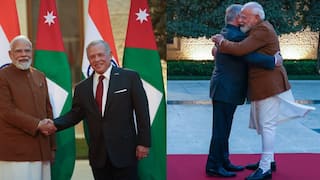Dussehra 2021: When is Dussehra? Know Significance Of The Day, Puja Timings
On this day devotees burn effigies of Ravan, Meghnad and Kumbhakaran to signify the destruction of evil, along with fireworks.

New Delhi: One of the major Hinud festivals known as Dussehra that marks the end of Navratri will will be celebrated on October 15 this year. Popular as Vijayadashami, the festival signifies the victory of good over evil. The festival is celebrated as the victory of Lord Rama over Ravana. Besides this, the day is also marked as the victory of Goddess Durga over demon Mahishadura.
What are puja timings?
The Vijay muhurat will begin at 2:02 pm and continue till 2:48 pm, according to drikpanchang.com. Aparahna puja muhurat will start at 1:16 pm and end at 3:34 pm.
While the Dashami tithi is slated to be 6:52 pm on October 14, 2021, and will end at 6:02 pm on October 15, 2021.
What are rituals?
Some of the rituals on this day include ‘Shami puja’, ‘Aparajita puja’ and ‘Seema avalanghan’ and are performed during the Aparahna time.
On this day, devotees burn effigies of Ravan to signify the destruction of evil, along with fireworks. On this day, effigies of Meghnad and Kumbhakaran are also burnt. People portray the life of Lord Rama through ballads and plays.
Devotees of Goddess Durga observe Navratri which literally translates to nine nights. During this period, different forms of the goddess Durga are worshipped. These include Shilaputri, Brahmacharni, Chandraghanta, Kushmanda, Skandama, Katyayani, Kalratri, Maha Gauri, and Siddhidatri. This year there was a confluence of Ashtami and Navami as both fell on October 24.
Jyoti Kalash, Kumari Puja, Sandhi Puja, Navami Homa, Lalitha Vrat and Chandi Path are some of the other famous rituals observed during the nine days of Navratri.
In eastern India, Bengalis observe Bijoya Dashami that marks the tenth day of Durga puja. On the last day of Durga puja, idols of the goddess are carried in processions and immersed in the river. Married women also smear vermilion on each other’s faces while others exchange greetings and celebrate with feasts.






































